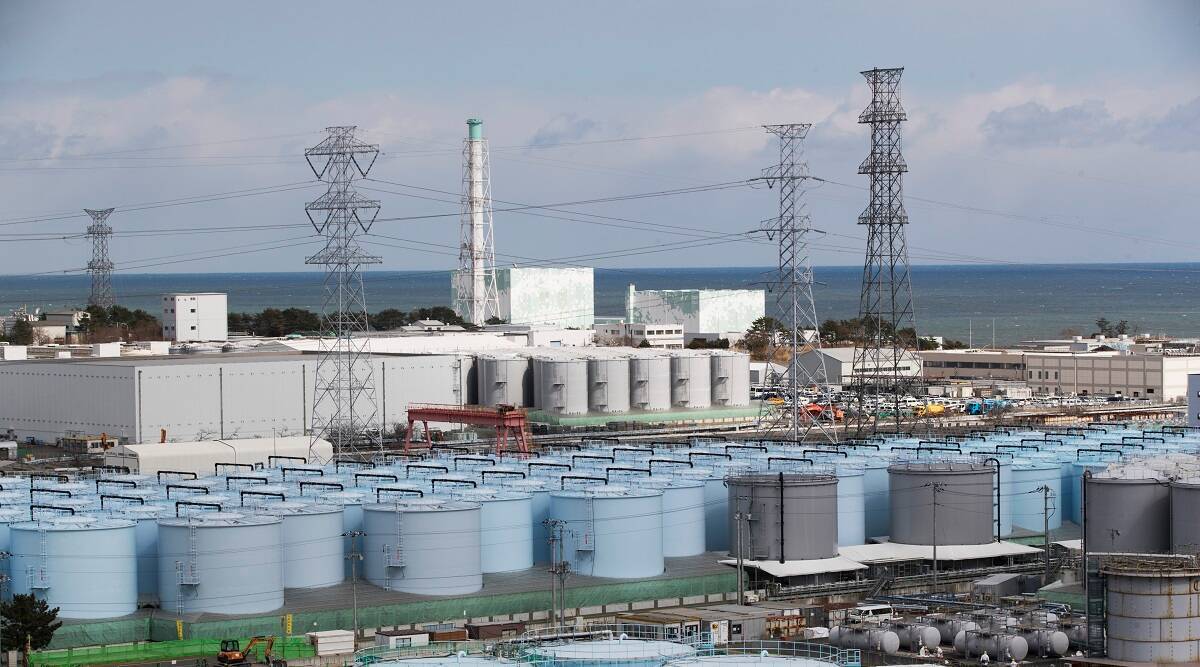The danger of indiscriminately releasing nuclear fission products into the ocean is that the products can find their way into the food chain, a New Zealand scientist has said on the impending discharge of radioactively-contaminated cooling water from Japan’s Fukushima Nuclear Power Plant into the Pacific Ocean.
“Once in the food chain the long-lived nuclear fission heavy nuclei like cesium-137, strontium-90, and iodine-131 tend to concentrate in human muscle, bones and thyroid, respectively. Cancers can be the result,” said David Krofcheck, senior lecturer in Physics at the University of Auckland.
Tony Hooker, director of the Centre for Radiation Research, Education and Innovation at Australia’s University of Adelaide, said there is a growing question regarding the use of the sea as a dumping ground when oceans are already stressed and struggling.
“Dilution is no longer the solution to pollution,” Hooker said, adding that the Pacific Islands Forum scientific panel has proposed to use the wastewater to make concrete, therefore locking up the residual radioactive tritium.
“Japan’s plan to begin releasing the treated, contaminated cooling water into the Pacific Ocean is premature, and presently, ill-advised,” said Robert Richmond, director of the Kewalo Marine Laboratory at the University of Hawaii at Manoa.
“The peoples of the Pacific did not contribute to the present problems and have nothing to gain from Japan’s plan for the contaminated water release over the next 30 years, but have much at risk for generations to come,” he said, adding that it is in violation of the precautionary principle as well as transboundary safety considerations.
Jamie Quinton, Head of School of Natural Sciences at Massey University of New Zealand, said that for several years now, Japan has been intending to release over 1.25 million tons of Fukushima wastewater into the sea as part of its plan to decommission the power station, when its storage capacity reaches its limit in 2023.
Tokyo Electric Power Company (TEPCO) has built the infrastructure to extract tonnes of newly contaminated water each day – water that is needed to keep the core of each of its three damaged reactors cool. It includes a processing plant called Advanced Liquid Processing System (ALPS), which filters most of the radioactive elements present in the wastewater, Quinton said.
Controversy with environmental groups arose because in April and May 2011, over 300,000 tons of untreated water was dumped into the ocean to free up water tanks, and these were 100 times over the legal limit for radioactivity release, he said, adding that while this led to the creation of the ALPS and dramatically improved the elemental profile of the wastewater, this initial dumping started the mistrust.
International law expert Duncan Currie told Xinhua that the ALPS treatment at best did not remove tritium, and there was next to no scientific information on the effects of tritium on the marine environment, including on different species.
Currie noted that the planned target in the treatment of Fukushima nuclear wastewater is only to remove other radioactive isotopes to “regulatory,” rather than detectable levels.
Meanwhile, tests of ALPS treatment systems have not been encouraging, Currie said. The assessment prepared by TEPCO is deficient and inadequate, according to Richmond of the University of Hawaii at Manoa.
New Zealand should be concerned over nuclear wastewater effects on the Pacific, Currie said, citing modeling that shows the movement of radioactive water to the North Pacific, including for instance through uptake in highly migratory fish and marine mammals.
Quinton noted that if the release of wastewater into the ocean is to proceed, “getting the process correct and within regulations is of particular importance to Japan’s aquaculture-based industries.
SOURCE: XINHUA/PACNEWS














